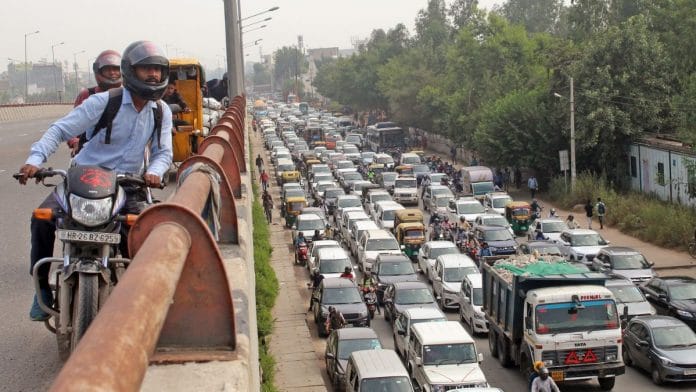New Delhi: Despite its ever-expanding network of Metro lines and flyovers, Delhi has scored low on OMI Foundation’s Ease of Moving Index 2022.
Delhi did not appear in the top three ranks on any of the parameters of the survey, while Pune, Mumbai and Bengaluru scored a minimum third rank on at least five of nine parameters. In the overall score among megacities, Pune-Pimpri Chinchwad topped the charts.
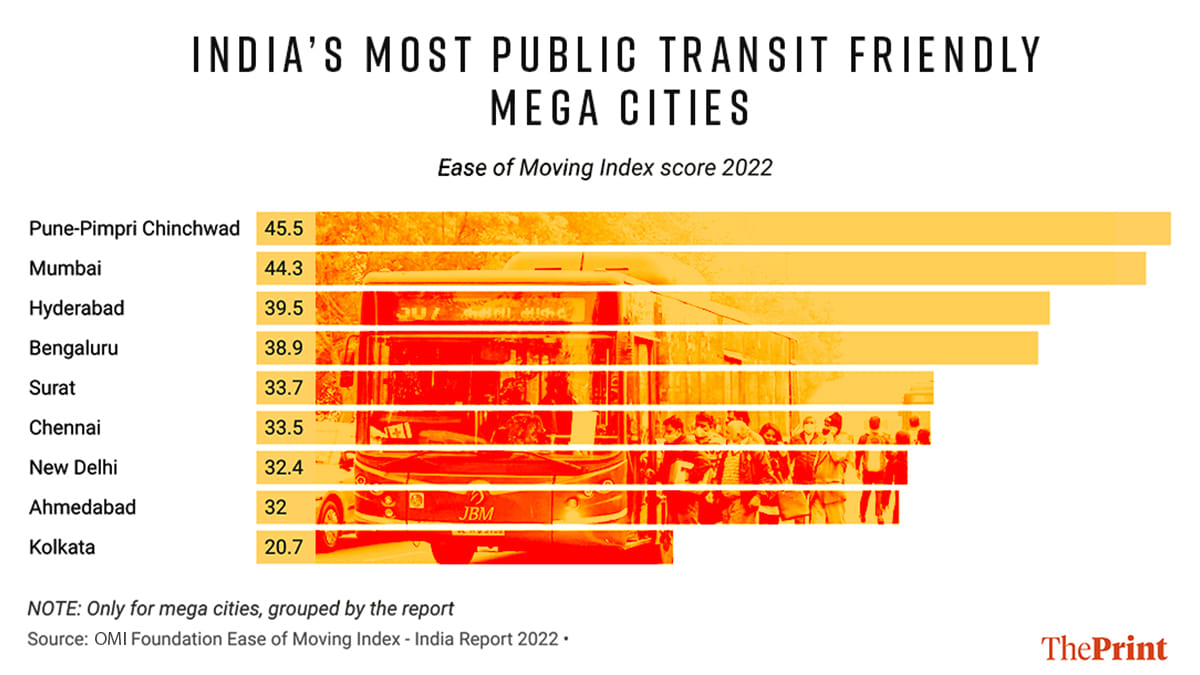
OMI Foundation is a social innovation and policy research think-tank. Released Tuesday, its Ease of Moving Index Report 2022 is based on the first and largest survey on urban mobility conducted across 40 cities of India, with over 50,000 people responding on nine broad parameters covering 41 indicators.
The nine broad parameters were — Impetus for Active and Shared Mobility, Seamless Mobility, Towards Vision Zero, Mobility for All, Affordable Mobility, Efficient and Reliable Mobility, Clean Mobility, Future Mobility and Investment in City.
The 40 cities part of the survey were further segregated into four groups — promising, rising, booming and megacitieshe cumulative scores of each city have been presented along with the individual composite scores for each parameter. The overall based on their size, for a fair comparison. Together, the 40 cities represent more than 25 per cent of India’s urban population, the report stated.
A total of nine cities received the ‘megacity’ tag as their population was above 40 lakh; eight were in the ‘booming’ category (20-40 lakh population); 12 in the ‘rising’ category (10-20 lakh population); and 11 in the ‘promising’ category (less than 10 lakh population).
The report further pointed out that the “Ease of Moving Index is an adaptation of the Human Development Index (HDI) widely used for over 30 years now to assess and compare countries on development indicators”.
It also stated that “the cumulative scores of each city have been presented along with the individual composite scores for each parameter. The overall score is the geometric mean of the nine parameters. A city can score a maximum of 100”.
Also read: 37% Indians experienced, saw unruly behaviour on public transport in last 3 years, says survey
Affordable Mobility and Cleanliness
Delhi was at the bottom among all nine megacities on the Affordable Mobility parameter. This parameter scored the cities on two indicators — how much of a person’s income was spent on commuting, and what percentage of people believed that public transportation was affordable between two points.
“An extensive public transport network can be left under-utilised if it is not affordable for a large section of society. This parameter aims to measure the proportion of household income spent on travel by respondents with monthly household income of up to Rs 30,000. At the same time, their perception towards affordability of public transport between any two points in the city is indicative of their willingness and ability to incur the same,” the report said.
Delhi also had the lowest score in terms of public perception of affordability (economical transit indicator).
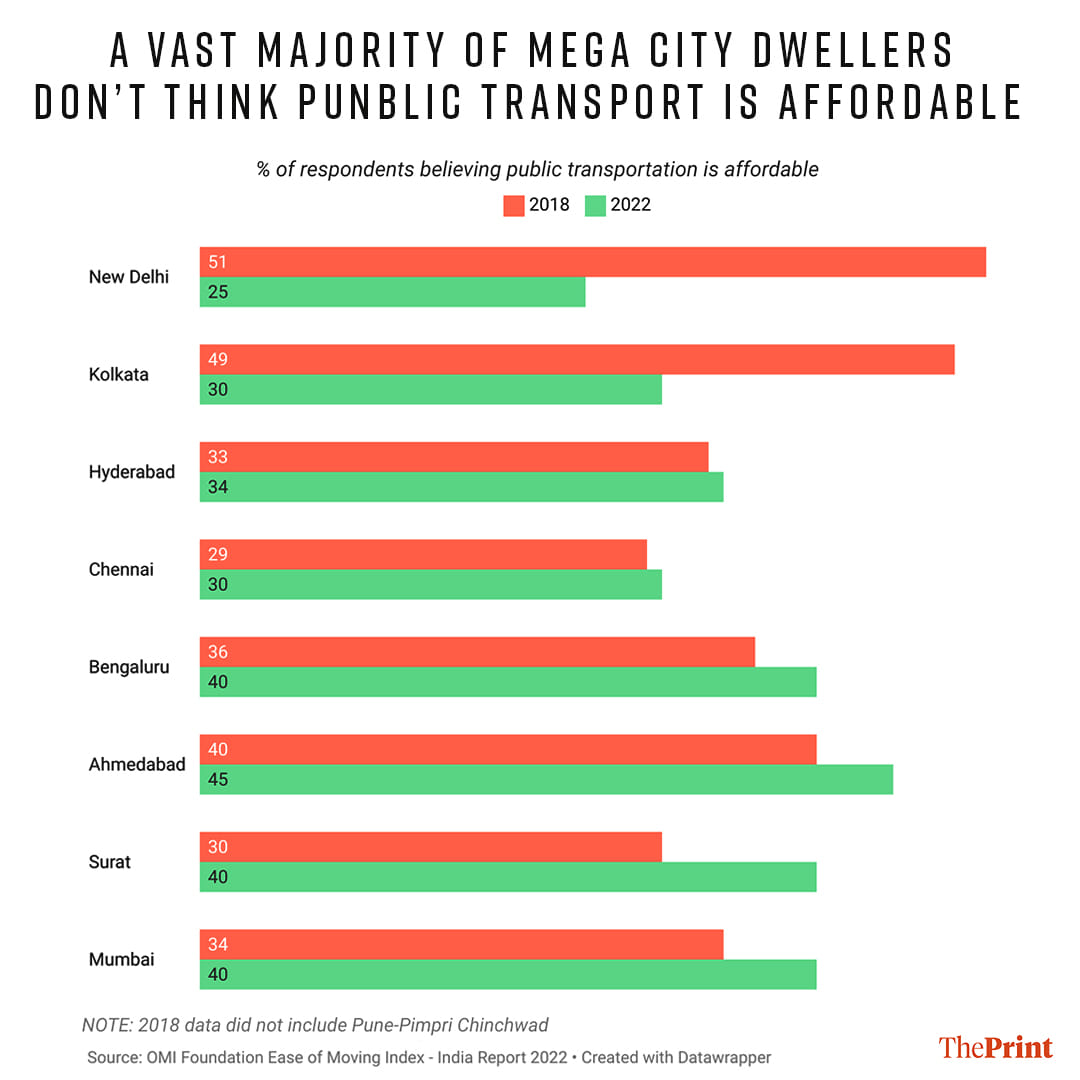
According to the report, less than 25 per cent of respondents in the Capital agreed that public transportation in the city was affordable. Delhi was followed by Kolkata, where 30 per cent people believed the same.
The report also provided a comparison with the Ease of Moving Index India Report 2018 conducted on similar indicators.
The comparison showed that the perception of Delhi’s public transport being affordable has taken a huge hit in the past four years.
In 2018, half of Delhi (or one in two people) believed that public transport was affordable, but in 2022 about one in four believed the same.
Besides Delhi, Kolkata is the only mega city where transport affordability perception has declined over the years. In the rest of the megacities, more and more people are finding public transport affordable.
According to the report, 58 per cent respondents in Pune agreed that their commute between two points was affordable, while around 40 per cent in Mumbai believed the same. In 2018, the same figure was 34 per cent for Mumbai while data for Pune was not available.
When it comes to Clean Mobility, Kolkata and Delhi received the lowest scores.
This parameter was based on environmental factors — average PM 2.5 levels recorded in 2021 and pollution-related deaths per lakh population. Also included were electric vehicle-related factors, such as their adoption at personal level, promotion policy for the same, shift to electric buses and neat mobility, or percentage of respondents agreeing that public transport is clean, hygienic and well-maintained.
Non-motor infrastructure
People who do not own motor vehicles are also significant commuters. The OMI Foundation survey shows that Delhi has failed to address the demands of non-motorists, be it commuters who cycle or those who reach their destination on foot.
Positive perception around cycling in Delhi was at the highest in 2018 — about 39 per cent people had responded positively to cycling tracks in the city. But in 2022, only 13 per cent people — the lowest across all megacities — were positive about the same.
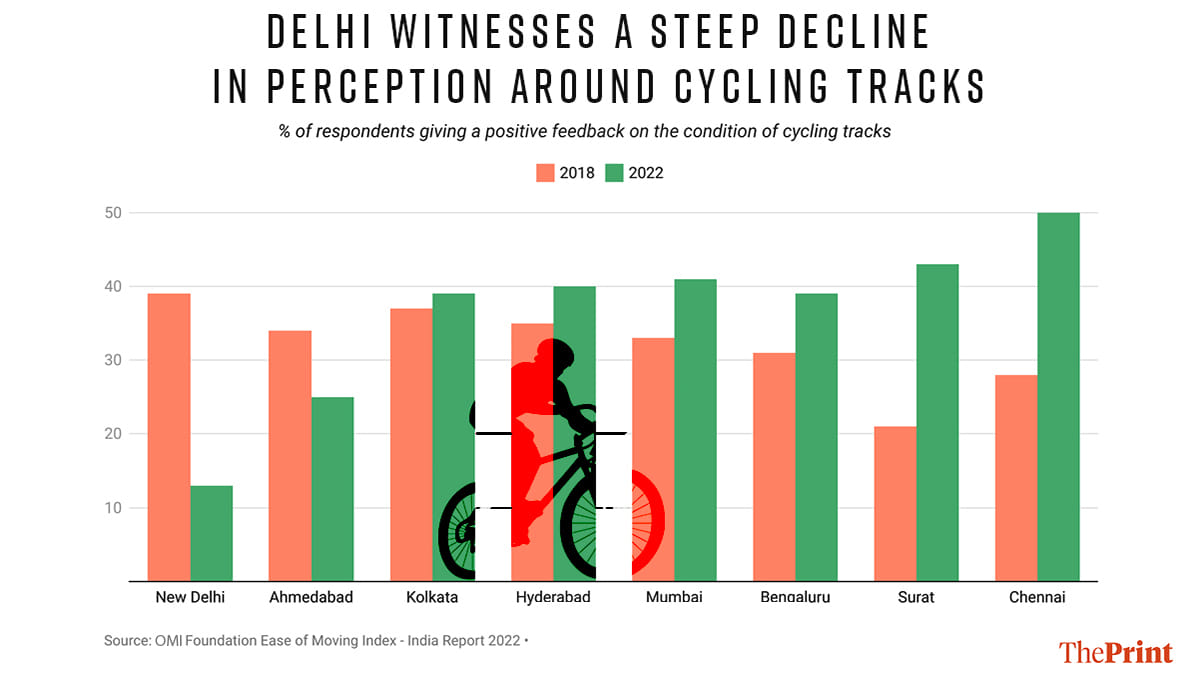
All the remaining megacities except Ahmedabad saw a surge in people who gave a positive response to cycling tracks in the city.
Similarly, the response to the condition of footpaths points to the difficulties pedestrians face in Delhi.
In 2018, 51 per cent respondents in Delhi had given a positive response on the condition of footpaths in the city, second only to Kolkata (53 per cent). In 2022, the figure was down to 21 per cent in Delhi and 20 per cent in Kolkata.
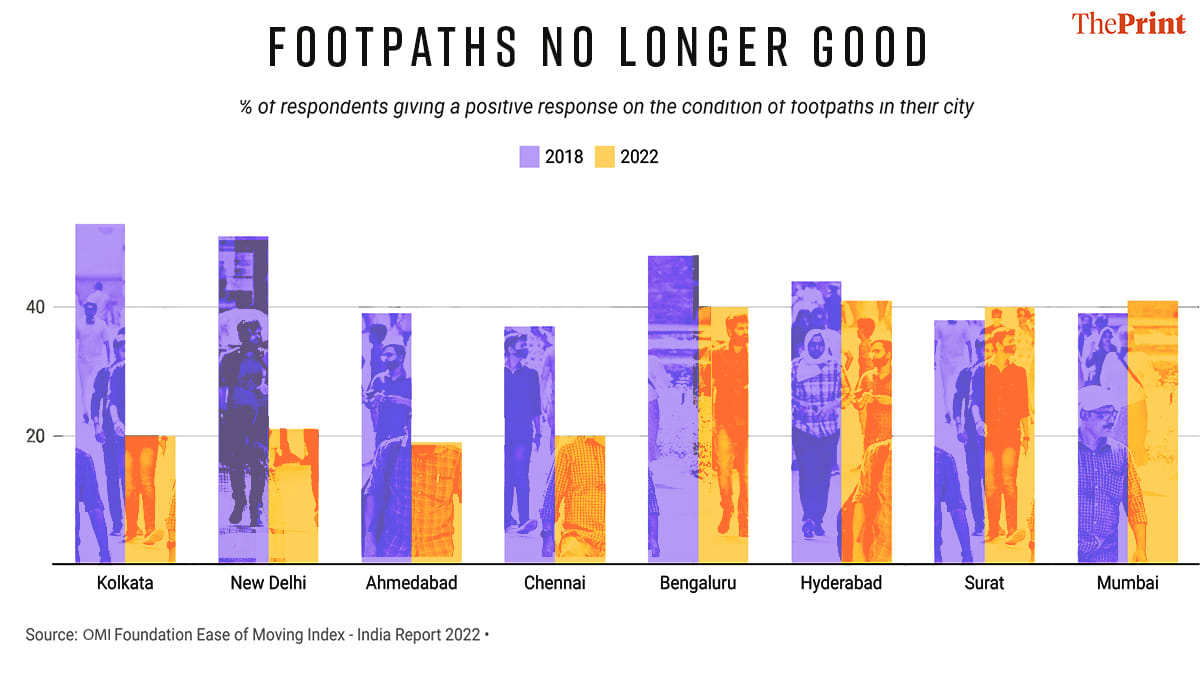
“The journey towards sustainable mobility crosses several milestones on the way, as cities move towards the destination of becoming carbon-neutral. If infrastructure sets the pace, technological advancements and behavioural changes ensure that the ride is seamless. While the cornerstones of accessibility, affordability and inclusivity form the foundation of a thriving mobility ecosystem, it also has to reflect the fabric of the city it serves,” the Ease of Moving Index Report 2022 stated.
“As India strives to become a US$5 trillion economy by 2025 and US$10 trillion by 2035, our lighthouse cities need to demonstrate mobility traits which are second to none and beyond,” it added.
(Edited by Nida Fatima Siddiqui)
Also read: An ‘electrifying’ future for public transport? Delhi govt plans 8,000 e-buses in next 3 yrs



